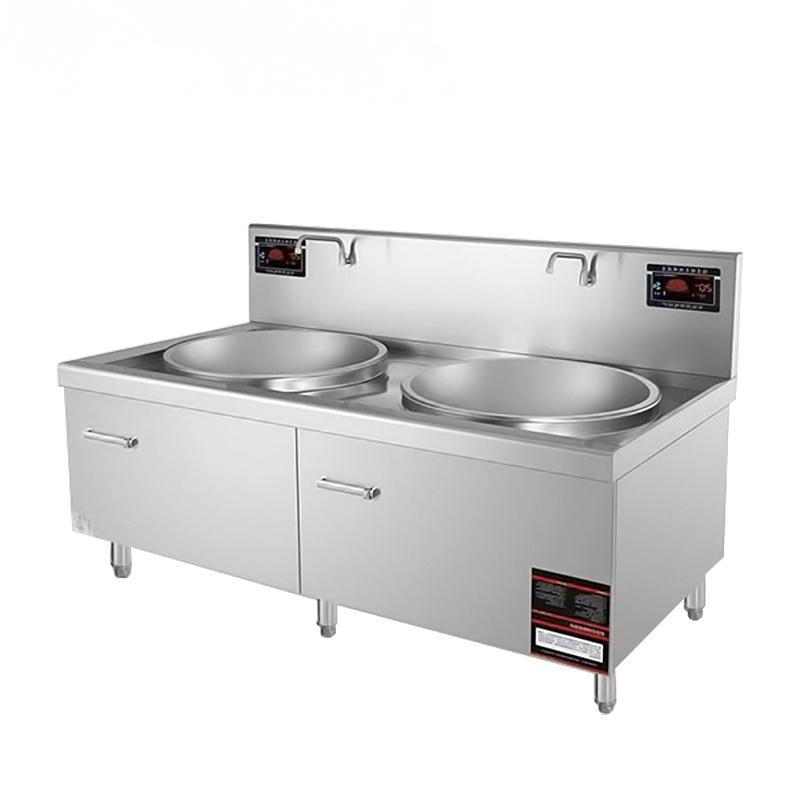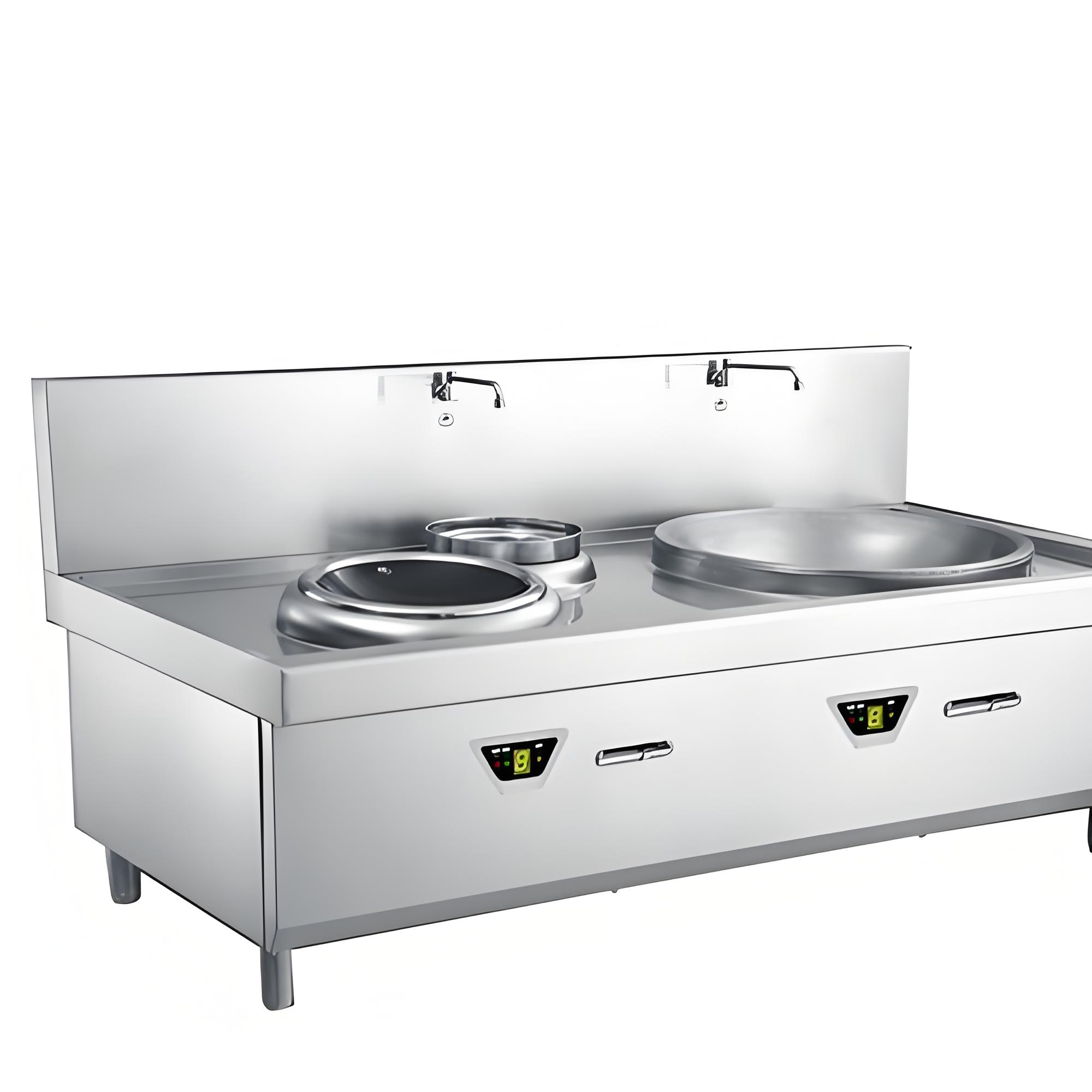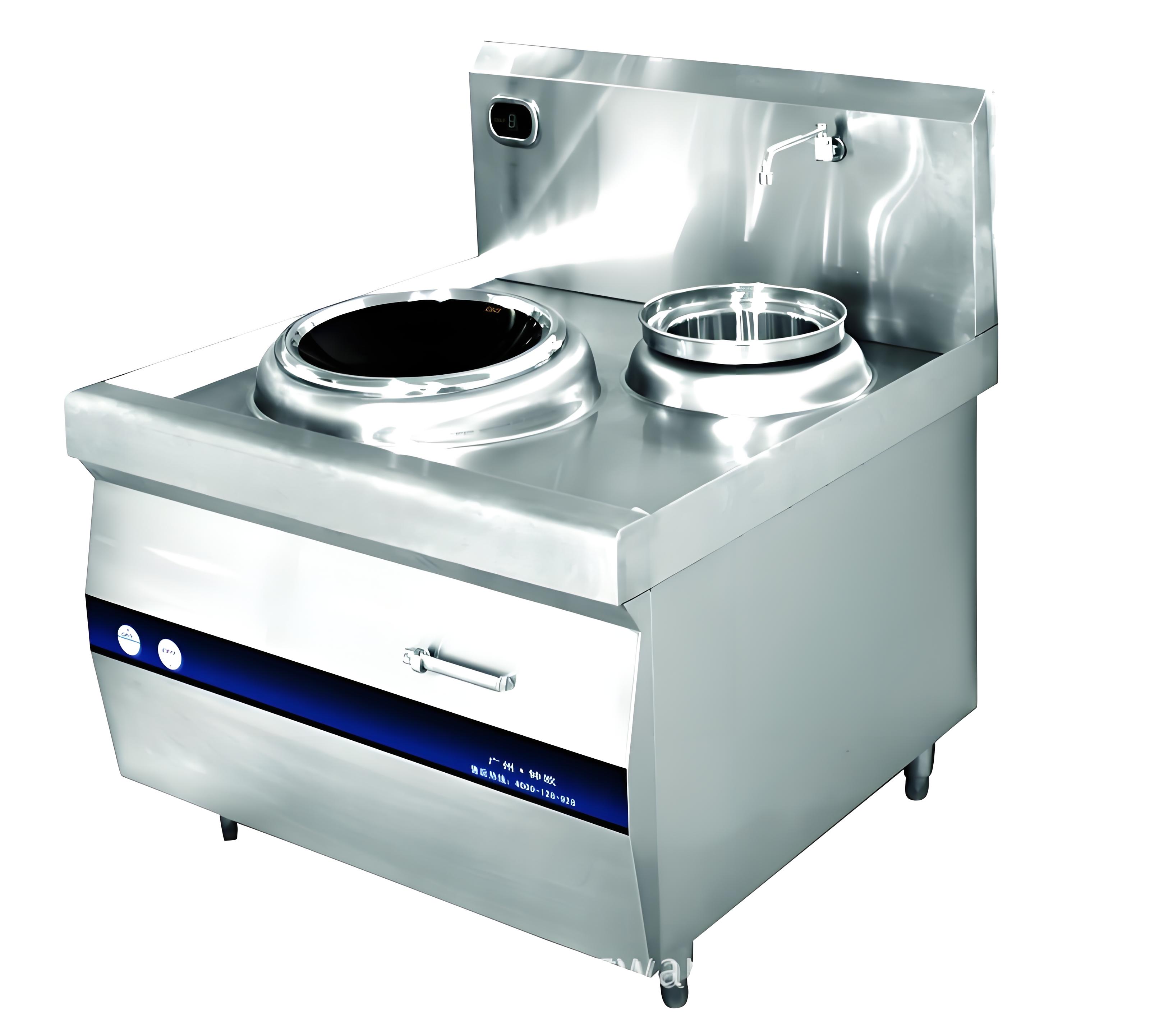Having spent over a decade advising restaurants, food trucks, and catering businesses on kitchen equipment, I’ve seen my fair share of triumphs and mishaps when it comes to choosing the right tools. One question that pops up repeatedly, especially from those new to commercial induction cooktops, is about cookware compatibility. Not all pots and pans work on induction, and using the wrong ones can lead to frustration, wasted time, and even damaged equipment. In this article, I’ll share my insights from years of working with chefs and kitchen managers to explain which cookware won’t work on commercial induction cooktops, why, and how to avoid common pitfalls. My goal is to help you equip your kitchen with confidence, whether you’re running a bustling diner or a small café.

How Induction Cooktops Work
To understand why certain cookware doesn’t work, let’s start with the basics of induction cooking. Unlike gas or electric stoves that heat the burner surface, induction cooktops use electromagnetic fields to directly heat the cookware. A copper coil beneath the cooktop’s surface generates a magnetic field, which induces an electric current in the cookware, creating heat. For this to work, the cookware must be ferromagnetic—meaning it contains materials like iron or certain steels that respond to magnetic fields.
I remember my first induction project back in 2008, helping a ramen shop switch from gas to induction. The owner was excited about the energy savings but baffled when half his pots wouldn’t heat up. After some trial and error, we figured out the issue: his aluminum and copper pans were simply incompatible. This experience taught me how critical it is to match cookware to induction technology, especially in high-stakes commercial kitchens.
Cookware That Cannot Be Used on Induction Cooktops
Not all cookware is created equal when it comes to induction. Here’s a detailed breakdown of the types that won’t work, based on my years of troubleshooting in real kitchens.
1. Non-Ferromagnetic Materials
The biggest limitation of induction cooking is that it requires cookware with magnetic properties. The following materials are not compatible with commercial induction cooktops:
Aluminum: Lightweight and excellent for heat conduction, aluminum is a favorite in many kitchens, but it’s not ferromagnetic, so it won’t work on induction.
Copper: Known for its superior heat distribution, copper is another non-magnetic material that fails to activate induction cooktops.
Glass: Glass cookware, like Pyrex or Vision, is non-magnetic and won’t heat up. It’s often used for baking but not suitable for induction.
Ceramic: Pure ceramic pots or pans, including some stoneware, lack the magnetic properties needed for induction.
Non-Magnetic Stainless Steel: Not all stainless steel works. Some grades, like 304 or 18/10 stainless steel, are austenitic and non-magnetic, making them incompatible.
I once worked with a café owner who invested in a high-end induction cooktop but was frustrated when his pricey aluminum sauté pans didn’t work. After testing with a magnet (a trick I’ll share later), we realized he needed to replace most of his cookware. To avoid this, always check the material before buying.

2. Cookware with Non-Flat Bottoms
Induction cooktops require direct contact between the cookware’s base and the cooking surface for efficient heat transfer. Pans with uneven, rounded, or warped bottoms won’t make proper contact, leading to poor or no heating. This includes:
Traditional Woks: Many woks have rounded bottoms for gas stoves, which don’t sit flat on induction surfaces. I helped a stir-fry restaurant switch to flat-bottomed induction-compatible woks, which solved their issue.
Warped Pans: Older pans that have warped from heavy use or overheating won’t work well, as the magnetic field weakens without full contact.
Pans with Raised Rims or Feet: Some cookware has small feet or raised edges on the base, reducing contact with the cooktop.
I recall a client with a catering business who couldn’t figure out why their induction cooktop wasn’t heating consistently. The culprit? A set of old, warped stainless steel pots. Replacing them with flat-bottomed, induction-ready cookware made all the difference.
3. Cookware That’s Too Small or Too Large
The size of the cookware matters. Most commercial induction cooktops have a minimum and maximum diameter for the cooking zone, typically 4.7 to 10 inches (12-26 cm). If the pan is too small, the cooktop may not detect it and won’t turn on. If it’s too large, only the area within the cooking zone will heat, leaving the edges cold.
I worked with a food truck owner who tried using a tiny 4-inch saucepan on a commercial induction cooktop. The cooktop kept shutting off because the pan was too small to trigger the sensor. Conversely, a client with a large griddle found that only the center heated properly. Always match your cookware size to the cooktop’s specifications.
4. Damaged or Low-Quality Cookware
Even if the material is technically compatible, poorly made or damaged cookware can cause issues:
Thin or Low-Quality Bases: Cheap cookware with thin ferromagnetic bases may heat unevenly or warp over time. I’ve seen this in budget stainless steel pans that buckled after a few months of heavy use.
Coated Non-Magnetic Cookware: Some pans have a thin magnetic layer bonded to a non-magnetic base (like aluminum). If the coating wears off, the pan becomes unusable on induction.
A bistro I consulted for had a mix of low-quality and high-end cookware. The cheap pans caused inconsistent heating, leading to burnt sauces and frustrated chefs. Investing in quality induction-compatible cookware resolved the issue and improved their workflow.

How to Test Cookware Compatibility
To avoid wasting money on incompatible cookware, here’s a simple trick I’ve used for years: the magnet test. Take a magnet (even a fridge magnet will do) and see if it sticks firmly to the bottom of the pan. If it does, the cookware is likely ferromagnetic and induction-compatible. If it doesn’t stick or only sticks weakly, it won’t work.
I always carry a small magnet when visiting clients to test their existing cookware. It’s saved countless headaches, like when a client was about to buy a set of beautiful but non-magnetic copper pots for their new induction setup. If you’re unsure, check with the manufacturer or look for an induction-compatible symbol (a coil or wave icon) on the cookware’s packaging.
Compatible Cookware Alternatives
If your current cookware isn’t compatible, don’t worry—there are plenty of induction-ready options that work well in commercial kitchens:
Cast Iron: Heavy but durable, cast iron is naturally ferromagnetic and heats evenly. It’s great for slow cooking or searing.
Magnetic Stainless Steel: Look for 400-series stainless steel or pans labeled “induction-ready.” These are common in professional kitchens.
Carbon Steel: Similar to cast iron, carbon steel is lightweight, magnetic, and excellent for high-heat cooking like stir-frying.
Multi-Clad Cookware: Many high-end brands like All-Clad or Demeyere offer pans with a magnetic stainless steel layer bonded to aluminum or copper for better heat distribution.
I helped a sushi restaurant upgrade their cookware for a new double-head induction cooktop. They switched to a mix of cast iron and multi-clad stainless steel pans, which handled everything from simmering broths to searing fish perfectly.

Comparison of Cookware Materials for Induction
Here’s a table summarizing common cookware materials and their compatibility with commercial induction cooktops, based on my experience:
| Material | Induction Compatible? | Pros | Cons |
|---|---|---|---|
| Cast Iron | Yes | Durable, even heating | Heavy, requires seasoning |
| Magnetic Stainless Steel | Yes | Lightweight, durable | Non-magnetic grades don’t work |
| Aluminum | No | Lightweight, great heat conduction | Non-magnetic, incompatible |
| Copper | No | Excellent heat distribution | Non-magnetic, expensive |
| Glass/Ceramic | No | Heat-resistant for baking | Non-magnetic, not suitable for stovetop |
This table can help you quickly assess whether your existing cookware will work or if you need to invest in new options.
Practical Tips for Choosing Induction-Compatible Cookware
Based on years of equipping kitchens, here are some actionable tips to ensure you get the right cookware for your commercial induction cooktop:
Invest in Quality
Cheap cookware may save money upfront but can lead to uneven heating or warping. Brands like Vollrath, Matfer Bourgeat, or Le Creuset offer durable, induction-ready options for commercial use. I’ve seen clients save thousands in the long run by choosing quality over budget brands.
Check Base Flatness
Before buying, inspect the pan’s base to ensure it’s flat and smooth. I once had a client return a set of “induction-compatible” pans because their slightly raised edges caused poor contact and weak heating.
Match Size to Cooking Zone
Check your cooktop’s manual for the recommended cookware diameter. Most commercial models work best with pans between 6 and 10 inches. Oversized or undersized pans can cause inefficiencies or safety shutoffs.
Consider Cookware Weight
In busy kitchens, heavy cast iron might slow down chefs who need to move pans quickly. A mix of cast iron for slow cooking and lighter stainless steel for fast tasks works well, as I learned while outfitting a fast-casual restaurant.
Test Before Buying in Bulk
If you’re equipping a new kitchen, buy one or two pieces first and test them on your cooktop. This saved a client of mine from ordering a full set of incompatible pans for their catering business.

Real-World Lessons from the Field
Let me share a couple of stories to illustrate the importance of choosing the right cookware. A few years ago, I worked with a food truck specializing in gourmet burgers. They upgraded to a single-head commercial induction cooktop to save space, but their aluminum griddle didn’t work. After switching to a cast iron griddle, they could sear burgers perfectly, and the cooktop’s precision helped them maintain consistent quality during busy festivals.
Another client, a mid-sized Italian restaurant, faced a different issue. They had a double-head induction cooktop but were using a mix of compatible and incompatible pans. The non-magnetic aluminum saucepans caused delays during dinner rushes, as chefs had to swap pans constantly. We audited their cookware, replaced the incompatible pieces with magnetic stainless steel, and trained the staff on proper induction use. The result? Faster service and happier chefs.
Common Mistakes to Avoid
Assuming All Stainless Steel Works
Not all stainless steel is magnetic. Always do the magnet test or check the product specifications. I’ve seen chefs waste time trying to heat non-magnetic stainless steel pans, thinking the cooktop was faulty.
Using Damaged Cookware
Warped or damaged pans can cause inconsistent heating or trigger safety shutoffs. Regularly inspect your cookware, especially in high-volume kitchens.
Overlooking Cooktop Specifications
Each induction cooktop has specific requirements for cookware size and material. Read the manual or consult the manufacturer to avoid compatibility issues.
Mixing Induction and Non-Induction Cookware
In busy kitchens, it’s easy to grab the wrong pan. Label or store induction-compatible cookware separately to avoid confusion, as I advised a client running a catering company with multiple stations.
Maintaining Induction-Compatible Cookware
To get the most out of your cookware, proper care is key:
Clean Regularly: Induction cooktops rely on direct contact, so keep pan bottoms clean to avoid residue buildup. A simple wipe with a damp cloth usually does the trick.
Avoid Overheating: Empty pans can overheat quickly on induction, causing warping or damage. Always have food or liquid in the pan when heating.
Store Properly: Stack pans carefully to prevent scratches or warping, which can affect contact with the cooktop.
I once helped a bakery extend the life of their induction-compatible pans by teaching their staff to avoid dry-heating and to store pans with protective liners. This small change saved them from replacing cookware every year.

Conclusion: Equipping Your Kitchen for Success
Choosing the right cookware for your commercial induction cooktop is critical to maximizing efficiency, safety, and performance in your kitchen. Avoid non-ferromagnetic materials like aluminum, copper, glass, and ceramic, as well as warped or improperly sized cookware. Stick to cast iron, magnetic stainless steel, or carbon steel with flat bottoms, and always verify compatibility with the magnet test or manufacturer specifications.
Before you invest, take stock of your kitchen’s needs—menu, volume, and workflow—and test a few pieces to ensure they meet your cooktop’s requirements. By choosing the right cookware, you’ll save time, reduce frustration, and keep your kitchen running smoothly. If you’re unsure where to start, consult your equipment supplier or a kitchen consultant for personalized advice. The right tools can make all the difference in delivering great food and keeping your customers coming back.
Frequently Asked Questions
Q1: How can I tell if my existing cookware will work on an induction cooktop?
A: Use the magnet test—place a magnet on the bottom of the pan. If it sticks firmly, the cookware is likely induction-compatible. You can also check for an induction symbol (a coil icon) on the packaging or consult the manufacturer.
Q2: Can I use my aluminum pans if I put a special plate or adapter on the induction cooktop?
A: Yes, induction adapter plates can make non-compatible cookware work by acting as a magnetic intermediary. However, they reduce efficiency and heat-up speed, so I recommend investing in induction-ready cookware for commercial kitchens.
Q3: Why does my induction cooktop keep shutting off with certain pans?
A: This usually happens if the pan is too small, non-magnetic, or not in full contact with the cooking zone. Check the cooktop’s manual for the minimum pan size and ensure the base is flat and ferromagnetic.
Q4: Are there any budget-friendly induction-compatible cookware options for small businesses?
A: Yes, brands like Winco or Vollrath offer affordable, durable induction-ready cookware. Cast iron is also a cost-effective option, though it’s heavier. Always prioritize quality to avoid frequent replacements.
Q5: Can I use my traditional round-bottom wok on an induction cooktop?
A: Traditional woks with rounded bottoms don’t work well because they lack full contact with the cooktop. Look for flat-bottomed, induction-compatible woks, which are widely available for commercial use.




